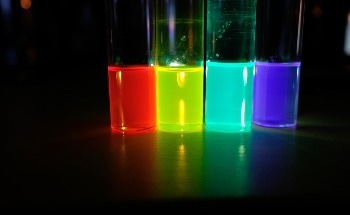
Cornell University researchers have developed a method for safely heating specific areas of the body. It uses biodegradable polymers containing microscopic pockets of water that respond to near-infrared laser light.
The method could enable precise, noninvasive diagnostics and treatments, including potential applications in cancer therapy.
The lead author of the study is Jinha Kwon, a postdoctoral researcher.
Zhiting Tian, the senior author and an associate professor of mechanical and aerospace engineering at Cornell Engineering, began the project with the goal of applying her lab’s expertise in nanoscale thermal transport and energy conversion to biomedicine. Her lab’s past work has included applications in areas such as space exploration and microelectronics.
The first step was identifying an effective delivery method.
In 2014, Tian came across a study on polylactic-co-glycolic acid (PLGA) polymers that could be activated by near-infrared light to release drugs. While the PLGA itself did not absorb the light, researchers proposed that water trapped inside the polymer responded to the light, enabling drug release.
This approach interested Tian because, unlike materials such as gold nanorods or semiconducting polymers, PLGA is biodegradable and poses no long-term risk to the body. It is also already approved by the FDA.
Tian wanted to test the idea but was uncertain how best to use PLGA as a localized heat source. In 2022, she came across a study by Stanford University professor Guosong Hong. That research used near-infrared light to heat temperature-sensitive ion channels and control specific deep-brain neuronal activity. This helped Tian see how the pieces could fit together
I got very excited about that work because if the neuron activities can be activated or inhibited by localized heating, that means we could use those PLGA particles for that purpose.
Zhiting Tian, Study Senior Author and Associate Professor, Mechanical and Aerospace Engineering, Cornell University
She decided to explore the topic further and took an academic approach. During a break, she returned to school and spent a semester at Stanford.
“I visited the group whose paper I read, and I stayed in their lab. I went to meetings, I watched them doing the experiments, and I attended the class the PI taught every week. It felt so good to be a student again, and I could take notes and learn all those new concepts. It was fun,” added Tian.
Tian came back to Cornell with a stronger understanding of neuromodulation. She also gained insight into how to connect it with her lab’s thermal transport work and her background in materials science.
However, her team did not have experience with in vitro cell research. To address this, they collaborated with Nozomi Nishimura, an associate professor of biomedical engineering at Cornell Engineering.
To produce the PLGA nanoparticles, the researchers tested two methods: single emulsion and double emulsion. They eventually found that the single emulsion method, where water pockets form naturally as high-frequency sound waves cause water to diffuse into the particles, was more effective. This process led to smaller water pockets that, unexpectedly, could reach higher temperatures.
Tian added, “The trick is that the water behaves differently when confined in the tiny spaces. It heats up more efficiently than the normal bulk water. And we have a polymer layer that acts like a thermal insulator to trap the heat inside and keeps it from escaping too quickly.”
That process creates a temperature difference between the photothermal agent—specifically, the confined water in the polymer—and the surrounding cellular environment, leading to localized heating.
Beyond neuromodulation, the technique could also be used for hyperthermia therapy. In this approach, heat is used to kill cancer cells, which can make chemotherapy and radiation treatments more effective.
Tian added, “You want to be very targeted, local, and precise, and increase the temperature of the cancerous cells, but without hurting the healthy tissues. For now, we can sort of understand what’s going on with the fundamental mechanisms inside. We did the cellular test so we can see that the particles are safe, and they don’t interfere with the key cellular functions. I think the next big step is to move to in vivo testing, where we apply this to animal models and see the impact.”
In addition to Nishimura, the research team included postdoctoral researchers Prithwish Biswas and Keehun Kim, research associate Chi-Yong Eom, master’s students Xinzhu Huang and Jaejun Lee, and Ph.D. student Jiyoung Kim.
The study was funded by the McManus Fund at Cornell. The researchers also made use of the Cornell Biotechnology Resource Center and the Cornell Center for Materials Research..
Journal Reference:
Kwon, J., et al. (2025). Biodegradable PLGA Particles with Confined Water for Safe Photothermal Biomodulation. ACS Nano. doi/10.1021/acsnano.5c06276


